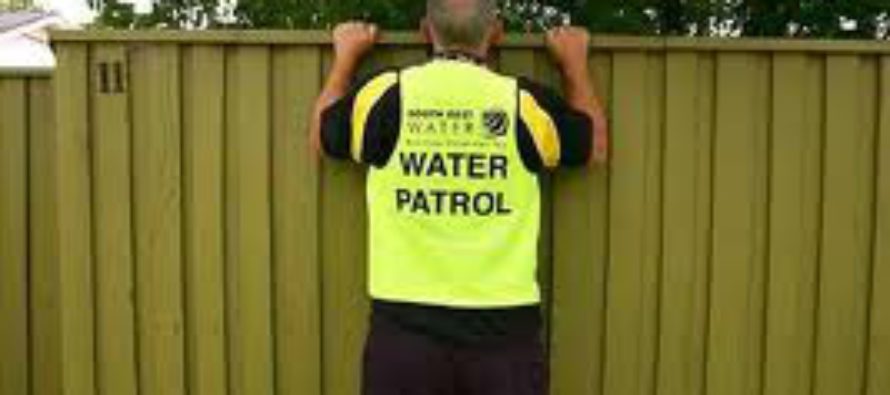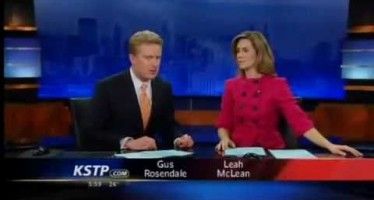Sacto water deputies patrolling for water wasters

Sacramento water police are on patrol. If the rule of law isn’t enough to control Sacramento’s citizens, government officials have turned to deputizing neighbors for help making sure everyone complies with environmental restrictions.
For nearly four years, the City of Sacramento has been encouraging residents to attend water conservation training sessions. Water conservation is always a good idea, but the city is going about it with an iron fist. The utility agency has three water waster inspectors, and is working to hire five more. The agency said in a recent news report it will spend $200,000 on meetings, and billboards to teach people about conservation.
Currently, only about 40 percent of city residents are on water meters.
“Over the past year, we have seen a huge increase in the numbers of calls for service and a desire by the community to have water conservation information shared with their organizations or neighborhoods,” Marty Hanneman, Director of the Department of Utilities, said in 2010. “We can’t think of a better way to share this information than neighbor to neighbor. These Water Conservation Ambassadors will be a huge asset to our department and allow our staff to focus on meeting Best Management Practices and reaching our goal of a 20% reduction in per capita water use by 2020.”
“To become a City of Sacramento Water Conservation Ambassador, volunteers must be 18 years of age or older, sign a volunteer agreement and attend a training session. While all activities are voluntary, it is estimated that the time commitment will be approximately 2-4 hours per month. Bilingual volunteers are especially needed.”
“We believe this is a great opportunity for all Sacramentans, from all walks of life to become more involved in their City, do something great for the environment, and make a difference in their neighborhood” said Hanneman.
Granted, some city residents do a lousy job monitoring their sprinkler systems. Some sprinkler systems spray sidewalks and cars, and run until the gutters flow like a river.
“Learn about the City’s free water conservation services, cool new ways to save water and how to help your neighbor’s [sic] save water by becoming a Water Conservation Ambassador,” a 2012 city notice said.
“Water Conservation Ambassadors will help spread the word about water conservation and protection of our water sources,” the city’s website says. “Ambassadors will help educate neighbors, friends, family and community organizations about conservation through attending community events, conducting knock and talks, and presenting at community meetings!”
Water wasters can receive fines up to $1,000 for repeat offenses.
California’s inadequate water plan
California’s water system is currently adequate enough for a population of 10 million — but the state is home to 30 million residents.
California has spent $18.7 billion on five water bonds since 2000, CalWatchdog’s Wayne Lusvardi explained in Nov. 2012. “These bonds funded mostly open space acquisitions and landscaping projects that captured no new water and built no new reservoirs.”
“Those bond funds could have funded the proposed $13 billion Delta Tunnels,” Lusvardi said. “Or they could have funded both new reservoirs proposed as part of the $11.1 billion Consolidated Water Bond to appear on the 2013 ballot. Instead the bond monies have been mostly squandered. Water bonds have been partly turned into a slush fund for the state Legislature to redistribute Cap and Trade taxes among other activities.”
In 1982, voters turned down the proposed Peripheral Canal Project. Population has grown about 59 percent since 1980, with few new hydroelectric dams or large water storage reservoirs added for storage since then.
There are 1,400 official dams and 1,300 official reservoirs in the state of California.
The Seven Oaks Reservoir in San Bernardino County was created in 1999 to prevent flooding. Diamond Valley Lake in Riverside County is a new storage reservoir, completed in 2004. But that reservoir is only stored surplus water from the Colorado River and the Sacramento Delta, did not produce any new water.
The Auburn Dam
In 1965, Congress authorized the Auburn Dam following severe flooding in Northern California. The proposed dam would have provided water storage, power generation, and flood control, with 2.5 million-acre-feet capacity. But in 1972 environmental groups sued to halt the dam project. In 1974, Friends of the River took over the environmental fight. By 1980 construction was halted. Despite several attempts, including a 2013 attempt to reignite the dam project, it was never built.
2014 water bonds
So here we are in 2014, with a long-delayed water bond slated for the Nov. 2014 ballot. Democratic State lawmakers have been delaying voters’ approval of an $11 billion water bond, originally passed in 2009.
Many say the bond is filled with pork, rather than seriously improving for better water storage and delivery systems. Money from the bond sale would go to cleaning up contaminated groundwater, increasing conservation and environmental projects, improving sewage systems, and studying and researching the construction of two dams — not actually building two dams, but only researching this. Only 25 percent is allocated for water storage in this proposal.
Contrast that Assemblyman Dan Logue, R-Marysville, who has authored AB 1445, proposing a $5.8billion water bond, also for the November, 2014 ballot. Logue’s bill would build two dams — one in the Northern California, and one in southern California — and fund $1 billion to water quality improvements, specifically in the Central Valley.
Related Articles
KFI’s John & Ken discuss ‘Browndoggle’ with CWD’s Chris Reed
March 16. 2013 In an interview with CalWatchdog contributor Chris Reed, KFI 640 AM’s John and Ken discussed the fiasco
Obama Must End TSA Molestations
John Seiler: There’s one thing I want to hear from President Obama tonight in his State of the Union Address:
Court of Appeal keeps high-speed rail chugging for now
This is Part 2 of a three-part series on the Draft 2014 Business Plan of the California High-Speed Rail Authority. Part





